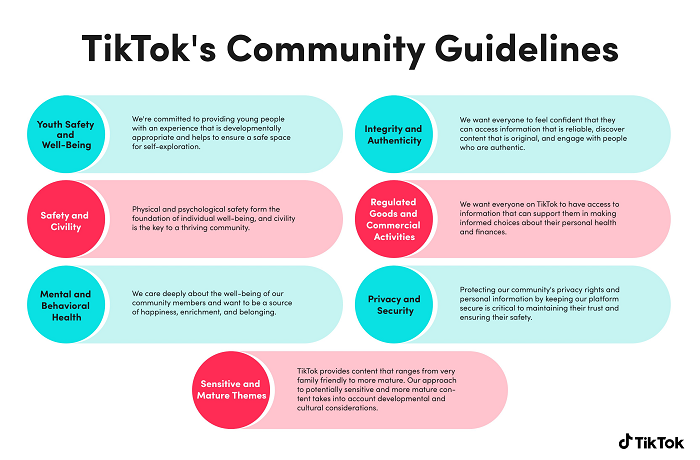With a potential US ban looming, TikTok has today announced that it’s updated its Community Guidelines, which now includes new provisos relating to synthetic media, hate speech, and election integrity efforts.
The updates seem to better align with what US officials may prefer, in regards to its moderation approach, while TikTok also notes that its Community Principles are also based on its ‘commitment to uphold human rights, and align with international legal frameworks’.
That seems like a fairly pointed way to distance itself from potentially different approaches on such in mainland China.
As per TikTok:
“To inform the most comprehensive updates to our Community Guidelines to date, we consulted more than 100 organizations around the world, including our US Content Advisory Council, and members of our community. Their input helped us strengthen our rules and respond to new threats and potential harms.”

The main changes to TikTok’s policy are in the synthetic media section, which now clearly states that AI creations depicting realistic scenes must be labeled as such.
“We welcome the creativity that new artificial intelligence (AI) and other digital technologies may unlock. However, AI can make it more difficult to distinguish between fact and fiction, carrying both societal and individual risks. Synthetic media or manipulated that shows realistic scenes must be clearly disclosed. This can be done through the use of a sticker or caption, such as ‘synthetic’, ‘fake’, ‘not real’, or ‘altered’.”
TikTok’s synthetic media policy also states that AI depictions of private citizens are not allowed, while depictions of public figures are allowed, so long as they are not used to endorse products or otherwise violate the platform’s policies.
With the use of generative AI tools on the rise, TikTok’s looking to get on the front foot, while also providing clear guidelines that protect politicians from misrepresentation via this form.
TikTok has also added ‘tribe’ as a protected attribute in its hate speech and hateful behavior policy, providing more culturally sensitive consideration, while it’s also added new, specific rules for protecting government and political party accounts, and combating election misinformation.
There’s clearly a tilt towards benefiting and protecting politicians here – the people that will ultimately be voting on a TikTok ban – while the updates, overall, align with emerging usage behaviors and trends, providing more ways for TikTok to crack down on misuse.
In addition to this, TikTok says that it’s also overhauled how it presents its rules, with sections now separated thematically into different topic areas.
TikTok has also shared the four pillars of its moderation approach:
- Remove violative content
- Age-restrict mature content so it is only viewed by adults (18 years or older)
- Make content ineligible for recommendation in the For You feed that isn’t appropriate for a broad audience
- Empower our community with information tools and resources to stay in control of their experience
The updates are clearly an effort to better ingratiate TikTok with US regulators, by aligning with the key pain points that have been identified as concerns by US officials. The updates also further separate TikTok from the rules applied in the Chinese version of the app, Douyin, which, ideally, will help to show that TikTok is a separate entity, and is not dictated by Chinese management.
And overall, the new Community Guidelines are easier to understand – so while it does feel like a ploy to appeal to US officials, it’s a good update either way, which should help users better understand the platform’s rules.
TikTok’s new Community Guidelines will take effect from the 21st April, 2023. You can check out the full, updated Community Guidelines document here.



